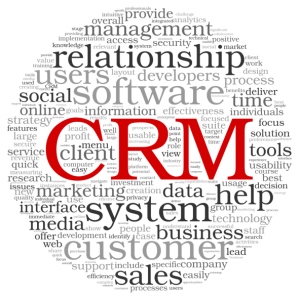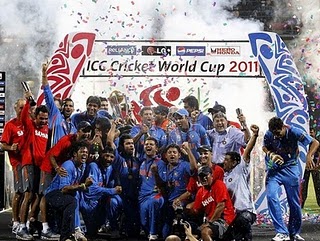Capillary gets featured as a Case Study in the World Economic Forum report on Entrepreneurial Ecosystems around the world. Learn about our growth in India & in Singapore. View the Case Study here. Pasting the text below for easy access:
Overview
Capillary provides easy-to-use, high-ROI cloud software solutions that empower retail businesses to engage intelligently with their customers in real time through mobile, social, online and in-store channels. With a vision to build the first billion-dollar product company out of India and to become a major player in the booming mobile and retail sectors, the company got its start by providing businesses in emerging economies (mainly India and South-East Asia) affordable access to state-of-the-art customer relationship and loyalty management technology. By emphasizing paperless mobile technology, real-time analytics and consumer engagement, marketing life cycle automation and sophisticated, innovative analytics that surpass capabilities of much larger, more expensive and complex customer relationship management (CRM) solutions, Capillary quickly attracted the attention of large global retail brands – and venture capital. Rapid growth has enabled the company to build out a complete, end-to-end software-as-a-service (SaaS) CRM platform, encompassing customer engagement, clienteling, loyalty, big data analytics and social CRM suites. Capillary now serves over 140 major global brands, including Pizza Hut, Puma, Jack Wills, Marks & Spencer, Benetton, Courts, Nike and Nokia, across 10,000+ stores and over 70 million consumer interactions. Clients have attributed up to 10% growth in same-store sales to Capillary’s solutions. Capillary has received numerous awards, including the Gartner 2013 Cool Vendor award and Marketing Magazine’s CRM & Loyalty Silver Agency of the Year Award 2013, and was also named one of Forbes’ 12 Hidden Gems. Capillary is backed by prominent institutional investors Sequoia Capital, Norwest Venture Partners and Qualcomm Ventures.
Timeline/Key Events
Aug 2008
Receives US$ 30,000 seed loan from Entrepreneurship Cell, IIT Kharagpur.
Aug 2009
Wins first client – Indus League (Future Group). Launched Mobile CRM and Loyalty offering.
Sep 2009
Obtains US$ 500,000 in funding from Qualcomm Ventures (QPrize – India Winners & Global Runners Up) and angel investors.
Mar 2010
Launches instant in-store cross & up-selling for retail brands.
Feb 2011
Wins first international client – Store 21 (United Kingdom).
May 2011
Launches Capillary Customer Intelligence, Big Data Analytics & Campaign Manager.
Jan 2012
Launches Capillary Lifecycle Marketer, predictive intelligence-powered customer engagement.
Jul 2012
Launches Capillary Social CRM for better social conversations, engagement and monetization.
Sep 2012
Raises US$16.5 million in series A funding from Sequoia Capital and Norwest Venture Partners.
Dec 2012
Wins coveted awards: 2012 Red Herring Top 100 Global, Forbes’ 12 Hidden Gems and Techcircle’s Top 10 SaaS Companies India.
Jun 2013
Named Gartner 2013 Cool Vendor in India, wins at MarketingMagazine’s Agency of the Year Awards and named one of SiliconIndia’s Top 10 most promising ventures founded by Indians.
Jul 2013
Powers 10,000+ stores for 140+ leading consumer brands, engaging 70 million consumers across 16 countries; 11 offices globally employing staff of 15 different nationalities.
Aug 2013
Launches Capillary Clienteling, store associate task management & customer experience management solutions.
Quotations
Aneesh Reddy is co-founder and CEO of Capillary Technologies. A visionary who believes that advances in technology lead to significant advances in business value and ROI, Reddy works with enterprise consumer businesses to help them put the right communications for the right products into the hands of the right customers at the right time. He is a featured entrepreneur in leading publications such as Forbes, Harvard Business Review and The Economic Times. Reddy is a frequently featured expert at global retail, marketing and technology forums and premier educational institutes such as Wharton and the Indian School of Business. He participates in discussions around entrepreneurship and major technology trends such as cloud, mobile, social and big data. He is also an early-stage investor in various ventures including Tynker, Studypad Inc., ANTfarm and Verious Inc. Reddy holds a Bachelor’s degree in Manufacturing Engineering from the Indian Institute of Technology, Kharagpur (IIT KGP).
Krishna Mehra is co-founder and CTO of Capillary Technologies, where he drives product vision and strategy for the company. As a technology evangelist, Mehra believes that true innovation happens at the confluence of technology and business. At Capillary, he has created powerful products that address large gaps in retail customer engagement and enable hundreds of consumer-facing businesses worldwide to embrace cutting-edge paradigms – including customer engagement technologies based on real-time analytics integrated mobile and social media.
Q1: What was the source of the initial idea, and how did that idea evolve into a viable growing company? How did it change over time?
Reddy: “Capillary was founded during the global economic recession (2008-2009) in the belief it could help emerging economy retailers engage with customers better using CRM technologies comparable in sophistication to those used in more developed economies but made both simpler to use and less expensive through cloud hosting. Unlike many first-time entrepreneurs who wait to validate their million-dollar ideas, we picked two areas – mobile and retail – which were both ‘next big things’ in India at the time. We spoke to many Indian retailers about their critical business problems and identified that even large retail chains had minimal understanding of why customers were not returning to stores to make additional purchases. E-commerce firms have the advantage of knowing their customers well and we wanted to bridge the knowledge gap for traditional bricks and mortar retailers. This turned out to be a game changer for our early-stage customers and was a key growth driver for Capillary.
Two aspects of the company stood out:
We carefully selected angel investors who could add value as the company grew, bringing on board as many as 17 angels over a period of three years, who were all experts in their own fields, including Rajan Anandan, Head of Google India; Venkat Tadanki, CEO of Secova; and Harminder Sahni, MD at Technopark (previously KSA Technopark).
We focused assiduously on both client and investor acquisitions by selling assertively through relationships and demonstrating our ability to win large companies as clients.
As Capillary began delivering amazing results in tough economic conditions, our Indian clients such as Pizza Hut, Puma and so forth began referring us to their counterparts in other markets such as Singapore, Malaysia and the UK, enabling us to scale up globally. The key to Capillary’s success has been our ability to keep delivering new products that increase our customers’ sales revenues and their marketing ROI, and to ensure the continued usefulness of our product suite to customers.”
Mehra: “We started on this journey with a consumer-focused product search and coupon idea. We wanted to do something that combined mobile with retail. Mobile was growing rapidly in India, and retail was beginning to happen. Our first idea was to launch an SMS-, location-based discount search business. However, our early client prospects told us that, while discounts are fine to attract consumers, retailers really wanted more capabilities for understanding, retaining, nurturing and engaging personally with their customers. We shifted our focus drastically, from building technology for consumers to building technology for businesses that would help them to extract more value from consumers using a cloud computing model. Over time there have been many changes to our technology – we have added major product streams, including social, big data and instant engagement.”
Q2: What were the major growth accelerators for your company in the early years of high growth?
Reddy: “Market focus: We started Capillary not with a ‘Big Idea’, but rather with a vision of creating the first billion-dollar SaaS solution company out of India with an extraordinary passion for being leaders in an entrepreneurial ecosystem. That helped us enormously because, instead of fixating on a single idea, we took our direction from market forces and found a unique focus in results achieved with early-stage clients. We were acutely aware of the exponential growth potential in India’s yet-to-be-organized or technology-enabled retail sector. Our vision evolved to accelerating retail growth via personalized and targeted customer engagement.
Availability of clients: Since our value proposition was built on the core problem of driving sales during an economic recession, we were able to quickly convince top Indian retailers such as Pizza Hut, Puma, Madura Garments, Raymond and so forth to come on board as EAA customers. Our ‘land and expand’ strategy – opening accounts with three-month proof-of-concept trials – worked tremendously well. Also, our well connected investors and advisers delivered some of our best long-term customers.
Business model: Within months of launch, our clients were seeing good success with Capillary, which enabled us to build a fairly straightforward business model – a hosted SaaS, pay-as-you-go solution, requiring no upfront investment and placing a minimal burden on resources. A retailer, for example, might agree to pay US$ 300-500 per point of sale per month based on solutions chosen, without any prohibitive hardware or other resource costs. We empower clients to experiment with our platform in a few stores for a three-month pilot engagement and then extend use of the software to more stores and for longer durations, depending on outcomes.
Funding & client references: We received the QPrize recognition from Qualcomm Ventures and US$ 500,000 from angel investors at the right time. This helped us to invest substantially in our initial product offering while the Qualcomm brand association made us a household name. Our international expansion started quite rapidly as domestic clientele referred us to their offshore counterparts. For example, Pizza Hut India led us to Pizza Hut accounts in Singapore, Hong Kong, Thailand and the Middle East; Puma India connected us to Puma businesses in Singapore and Malaysia; Robinsons Singapore got us into their Malaysia business; and Alok Industries in India took us to the UK and helped us to obtain Store Twenty One as our first international client.”
Mehra: “The Capillary team: From the very beginning we focused on building a strong, empowered organization. We deliver exceptionally high-quality work, which differentiates us from our competition and fuels our growth. Most of our early hires were people we knew personally either from previous workplaces or through collaboration in robotics, entrepreneurship and other IIT KGP clubs. Hence, we knew the passionate performers on our team even before we hired them. Today, we employ over 150 highly capable technology, R&D and analytics professionals holding degrees from premier technology and business institutions across India. This has helped us lay an extremely strong foundation for our technology, R&D and analytics functions: a highly capable team, which has expanded without the need for big budgets and through personal connections alone, which has always been our key strength. With almost 400 employees in total, we have virtually zero attrition, especially among staff at the mid-senior level and above. Capillary’s core team has always believed in giving complete freedom to its team members; this keeps our talent engaged and focused on innovating at all times.”
Q3: What role did key aspects of the entrepreneurial ecosystem surrounding your company play in the growth of your company?
Mehra: “The tactical shift in operations: We started the company in Kolkata, a Tier 2 city in India that was in the early stages of becoming an IT destination. We quickly realized, however, that Bangalore – India’s Tier 1 IT hub city – would provide a better ecosystem in which to build our company. Indeed, moving to Bangalore turned out to be an important strategic move for our company since it gave us access to the right investors and advisers. It was in Bangalore that we learned of Qualcomm’s Q prize at an open coffee club and later went on to win the prize, providing a major boost for our nascent company. We also made connections with Qualcomm Ventures, which later invested in Capillary.
Availability of talent: India has one of the strongest technology talent pools in the world, and since Bangalore is home to most of the country’s R&D centres, there was an abundance of talent available to help build our product suite. We built a strong technology and R&D team by acquiring top talent from noted companies such as IBM, Microsoft, Oracle, Salesforce, Dunhumby, Fair Isaac, Box.net, Infor and Dell, while also attracting fresh talent from the world famous IIT and IIM educational institutions.”
Reddy: “The Great Recession: 2008 was quite an eventful year for Capillary. Just as Lehman Brothers was filing for bankruptcy, we were busy procuring a US$ 30,000 loan from our alma mater IIT KGP to start our company. The recession came as an unexpected boon for us – we did not have to pay premium wages to attract outstanding talent and we got great discounts on major upfront investments. We were also able to position our solutions as a good recession strategy: increase share of wallet, sell more high-margin items, cross- and up-sell more assertively, identify and win back lapsed customers, convert new customers to repeat business and so forth. We had a winning value proposition amidst difficult economic conditions.
Largest series A round: With all we had going for us, Capillary was able to raise the largest series A funding for Indian product start-ups (US$ 16.5 million) from leading institutional investors Sequoia Capital, Norwest Venture Partners and Qualcomm Ventures. These firms provide great advisory services and have helped our leadership team to acquire amazing confidence, to build ambitious growth plans for international geographies and to fund accelerated product development.
Moving HQ to Singapore: Singapore is becoming the Silicon Valley of Asia; start-ups are popping up all over, attracting substantial investment wealth. Investors, shareholders and entrepreneurs are all realizing Singapore’s advantages, experiencing fast growth and gaining entry to Asia’s untapped developing market economies. Favourable regulations and extensive government support for start-ups made Singapore a very attractive choice for our new corporate HQ location in early 2012.”
Q4: What key aspects of the entrepreneurial ecosystem surrounding your company that were absent (or existed only in a weak form) created the greatest challenges for growing your company? Please describe and discuss how you met/were impacted by these gaps in the ecosystem and their resultant challenges?
Reddy: “In 2008, India and the rest of the world were experiencing economic recession – not a very encouraging environment in which to start a business. However, we saw this as an opportunity rather than a hurdle. We bootstrapped for the first three years and functioned with very little funding because the investors were cooperating and customers were willing to pay. In the early years, one of India’s largest venture capital firms wanted to invest in Capillary, but they also wanted to change our business model to focus on consumers. Our core team believed firmly in our vision and the direction in which Capillary was moving. We turned down the investment offer and, despite limited funding, grew rapidly over a very short time span by sticking to our focus areas.
Another prohibiting factor was friends and family and the societal mindset in general. The start-up scene in India was very young; most people were willing to work only for large corporations that offered stable careers with job security, which made it difficult early on to attract the right people. Even when our top candidates were convinced to join Capillary, peer and family pressures to settle down and avoid risks caused many to back away from the opportunities we offered. The solution we found was to nurture talent rather than acquire it. Instead of focusing on job descriptions, we focused on people, which led to outstanding early results. Now, as we scale up, we are bringing on board senior leaders across all departments to drive the next phase of growth for Capillary. We intend to invest significantly in the professional and personal development of the people who work for us.”
Mehra: “In the early stages, we faced a lot of infrastructure and regulatory challenges as is the case for most entrepreneurs. But our focus on cloud technology helped us to grow easily and to offer substantial value to customers, while also maintaining great operating margins. But we did spend a lot of our time doing things that were not adding value, as we were part of the first wave of young first-time entrepreneurs in a country still bound by legacy corporate environments and no successful history of product technology companies.”
Q5: At what stage did you invest significant resources seeking to grow your company internationally/beyond your domestic country or region? What factors were pivotal in deciding when to seek growth internationally and where to seek that growth?
Mehra: “After successfully rolling out our solutions for Indian clients, stabilizing our client base and increasingly carving out niche leadership positions domestically, we decided to investigate neighbouring markets. We observed that retailers in regions such as South-East Asia, the Middle East and Western Europe were facing similar problems and using solutions and technologies that were far behind best in class. We knew our solutions could help these businesses and were able to make strong business cases around potential revenue opportunities. Early successes in international markets inspired us to dramatically accelerate our offshore market explorations.”
Reddy: “After our series A funding round, we decided to invest significantly in international markets. For some of the early markets into which we ventured, for example the United Arab Emirates and the UK, it took a long time to deliver results and cost our company millions. Investing in those markets was a very bold move for us, but we stood by our decision and, by the time Capillary started operations in Singapore, our international businesses had begun generating significant revenues and looked extremely promising. In the early stages, much of our R&D investment went to preparing our products for global markets. We started slowly receiving proactive inquires from international accounts and understood there was a strong market for our products globally. Our first few international clients came as references from existing successful clients in India. Those early experiences gave us the confidence to quickly scale offshore operations.
Q6: What were the biggest challenges in building growth internationally? How did you meet or adapt to those challenges?
Mehra: “We initially found it difficult to build sales presence in international markets. For a specialized industry like ours, it is essential to attract sales talent that can build the company’s brand with their existing know-how and business networks, and are passionate about how entrepreneurial workplaces thrive. Since we were looking at three large potential markets – South-East Asia, Western Europe and the United States – we had to be careful not to spread our resources too thinly. What has worked well for us is the three markets approach – every year we decide to open three new territories. First we stabilize the territories, put our teams in place and acquire at least five early-stage clients rapidly, and, in parallel, invest aggressively in the three markets we opened the previous year and that have now stabilized. Markets like Singapore, the United Kingdom and United States are showing great results for us with such a focused expansion.”
Reddy: “One of the biggest challenges Capillary faced was a lack of brand awareness outside India, which made it difficult to generate new business leads. And while our Indian clients helped us move to international locations through word of mouth, this was not a model for fast growth. We solved the problem by creating an inside sales team for lead generation and a powerful outbound sales team operating out of India. While we had always used a push sales format in India, we found this did not work well in western countries. We realised western retailers were looking for more consultative approaches. We also found a large market gap; there were plenty of very expensive CRM solutions aimed at the Walmarts and Tescos of the world, but far fewer serving lower enterprise and mid-market retailers. We positioned our Intelligent Customer EngagementTM suite, which combines CRM, big data analytics and campaign automation, to serve these neglected markets in a cost-effective, value-driven manner.
Another obstacle was hesitancy among large retail brands to work with a very young, seemingly inexperienced team. We overcame this hesitancy with a highly effective ‘land and expand’ approach, initiating engagements via small, high-ROI pilot projects to prove the efficacy of our products and to close increasingly large deals with world-famous brands. Over time, as we have worked with more than 140 retail brands around the world, we have developed deep retail trade expertise and extensive intellectual property, which has become a unique selling proposition for us with larger accounts.”
Q7: What major role, if any, did key aspects of the ecosystem in the country (or countries) you first sought international growth either promote or impede your ability to grow in those international markets?
Reddy: “Expanding to international markets had a great impact on how our company functioned and made decisions. As a young start-up, we followed the Jugaad (frugal) innovation style, making short-term fixes under tight deadlines driven primarily by clients’ whims and priorities. That made it difficult for us to stay focused on our long-term product development vision and may have cost us some growth. As we became more internationally driven, we had to drastically change our development and service delivery style, aligning with our longer-term business strategy and making a strong commitment to long-term planning, effective project management and reflective decision-making – taking time but delivering high-quality work by agreed dates.
Our international expansion has also enabled us to bring on board industry veterans from the CRM, analytics and consumer loyalty domains, a group of experts to which we did not have access in our domestic market and who have made our corporate portfolio quite strong. Now we have the right capacity to tackle large accounts and win massive deals all around the world.”
Q8: Seeking international growth often has both high moments and dark (low) moments. Briefly describe one high moment and one dark (low) moment in seeking international growth.
Reddy: “High moment: The highest moment for us, so far, was winning our first international client, Store Twenty One in the UK. It was an important milestone in our history and we look upon the accomplishment with great pride. It had a dramatic impact on the way we run our company and completely transformed our long-term business plans. What followed Store Twenty One was a series of early international wins. I still remember one of the deals we won, which was at five times the market pricing and one of our first engagements in a new region and taught us a great deal about how to compete with established competitors without compromising on price. Today, we are not less expensive than contemporary competitors but we do deliver much greater value, faster and with less effort.
Low moment: We have experienced great learning on our journey into international markets. For example, sales cycle times were much longer than we had expected in early UAE and UK market ventures. We spent millions and waited months for decisions to be made. It took time for us to figure out that we needed a combination of stable lead generation, steady filling and strong management of our opportunity pipelines and dedicated brand building to establish our credibility in new markets. Patience and how to make decisive, smart manoeuvres in complex sales processes are two things we have learned along the way.”





 The arrival of the mobile phone, one of the most disruptive pieces of technology ever developed, has changed the human civilization radically over last decade. With almost 4.9 billion subscribers (77% of the world population) today, the mobile as a device is at once personal; its always on, always present, and always connected, and has changed some of our most deeply set habits.
The arrival of the mobile phone, one of the most disruptive pieces of technology ever developed, has changed the human civilization radically over last decade. With almost 4.9 billion subscribers (77% of the world population) today, the mobile as a device is at once personal; its always on, always present, and always connected, and has changed some of our most deeply set habits.





